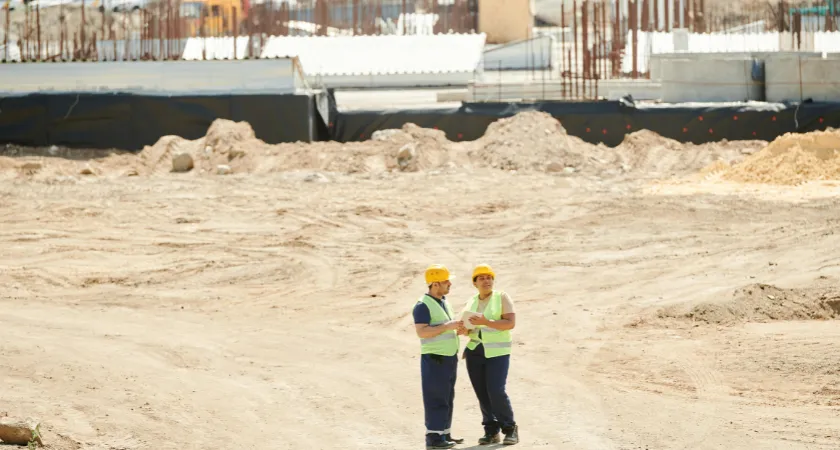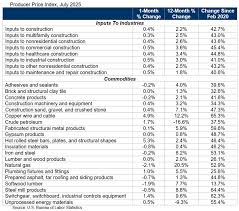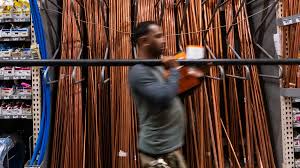
The latest Producer Price Index (PPI) report brought little comfort to builders and contractors, as construction input prices continued to climb in July. According to an analysis by Associated Builders and Contractors (ABC), overall construction input costs increased 0.4% for the month, matching the rise for nonresidential inputs. Compared to a year ago, total input prices are up 2.2%, with nonresidential inputs climbing 2.6%.

Certain materials experienced sharper increases, placing more strain on builders’ budgets. Copper wire and cable, for example, rose 4.9% in July alone and are now up 12.2% year over year. That surge, analysts say, is being driven largely by trade policies and tariff impacts.
“Steep tariff increases earlier this year… drove the producer price index for construction inputs higher,” said Ken Simonson, chief economist for the Associated General Contractors of America (AGC). “Even though contractors do not generally import materials directly, it is clear that domestic producers are raising prices in line with the protection tariffs are providing them.”
Those pressures have left many contractors caught between rising costs and uncertain demand. Nonresidential construction spending declined again in June—the sixth drop in the past seven months—reflecting a cooling market shaped by high interest rates, slower private sector investment, and inflationary risks.
According to AGC data, aluminum mill shapes surged 7.4% in July and are up 13.7% compared to a year ago. Copper and brass mill shapes increased 5.7% for the month and 6.9% year over year. Steel mill products offered a rare exception, slipping 0.5% in July, though they remain 8.8% higher than July 2024.
ABC’s chief economist, Anirban Basu, warned that the combination of tariff-related costs and broader inflationary trends could compress contractor margins further. “The construction industry is in desperate need of lower borrowing costs, and higher rates for longer would continue to weigh on construction spending,” Basu said.
Not all industry voices see the recent numbers as alarming. Paul Giorgio, chief operating officer of Los Angeles-based Eldridge Acre Partners, said the latest PPI rise may not have a dramatic impact on project pipelines.
“Although the PPI rose 0.9% which was higher than 0.2% expectations, the impacts to the consumer and owners were not impactful as the Consumer Price Index only had an insignificant 0.2% increase and only 2.7% increase year-over-year,” Giorgio told Construction Dive. “These adjustments are in line with normal escalation and not material.”

Others remain more cautious. Michael O’Reilly, vice president at Rider Levett Bucknall in New York City, emphasized that ongoing cost volatility in aluminum, steel, and copper leaves many contractors hesitant about future commitments.
“While some relief may come from potential interest rate cuts later this year, much of the industry’s optimism hinges on trade policy stabilization,” O’Reilly said. “Without meaningful changes to tariff structures or supply chain conditions, the construction sector may continue to face headwinds through the remainder of 2025.”
The PPI report comes at a critical time as the Federal Reserve prepares for its September meeting. Broader inflationary pressures—final demand goods and services rising at their fastest pace since March 2022—could complicate the Fed’s decision on whether to cut rates.
“With prices for final demand goods and services rising at the fastest pace since March 2022, the Federal Reserve will have to consider the prospect of resurgent inflation when deciding whether or not to cut rates at its September meeting,” Basu explained.
If borrowing costs remain high, construction activity could slow even further, worsening the already fragile environment for contractors navigating tariff-driven price increases, tightening margins, and shifting demand.
Originally reported by Sebastian Obando in Construction Dive.